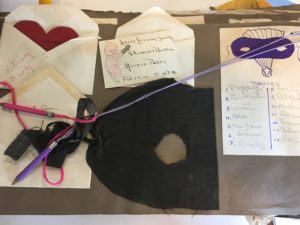
This building commemorates noted 19th century scientist and oceanographer Matthew Fontaine Maury, who resigned his commission in the US Navy in 1861 to serve as a commodore in the Confederate navy. After the Civil War, he briefly lived in Mexico, where he tried to create a slaveholding colony for exiled Confederates. He eventually returned to his home state, Virginia, and accepted a position as professor of meteorology at Virginia Military Institute. A strong advocate for public higher education, he helped create the Virginia Agricultural and Mechanical College (now Virginia Tech). Photo by author.
I’m republishing this May 2017 post today 6/20/20 with a disclaimer: it contains references to historic ideas, words, and images that today are considered racist. I temporarily removed it because links to it were circulating on mass media and social media, and portions of it were taken out of context.
Talk of Confederate heritage seems to be everywhere these days. As a public historian who studies, teaches, and writes about this subject, I find the sudden resurgence fascinating and repellent at the same time. Mitch Landrieu, the mayor of New Orleans, put it well when he said, Confederate statues “are not just innocent remembrances of a benign history. These monuments purposefully celebrate a fictional, sanitized Confederacy; ignoring the death, ignoring the enslavement, and the terror that it actually stood for.” I make a similar point in my forthcoming book, Race, Place, and Memory: Deep Currents in WiImington, NC, which includes an analysis of monuments and memorials in that city. But my interest is more than academic. Every day, I go to work in a building that long served as a Confederate monument. To be clear, my views on renaming/removing/contextualizing such Continue reading →


